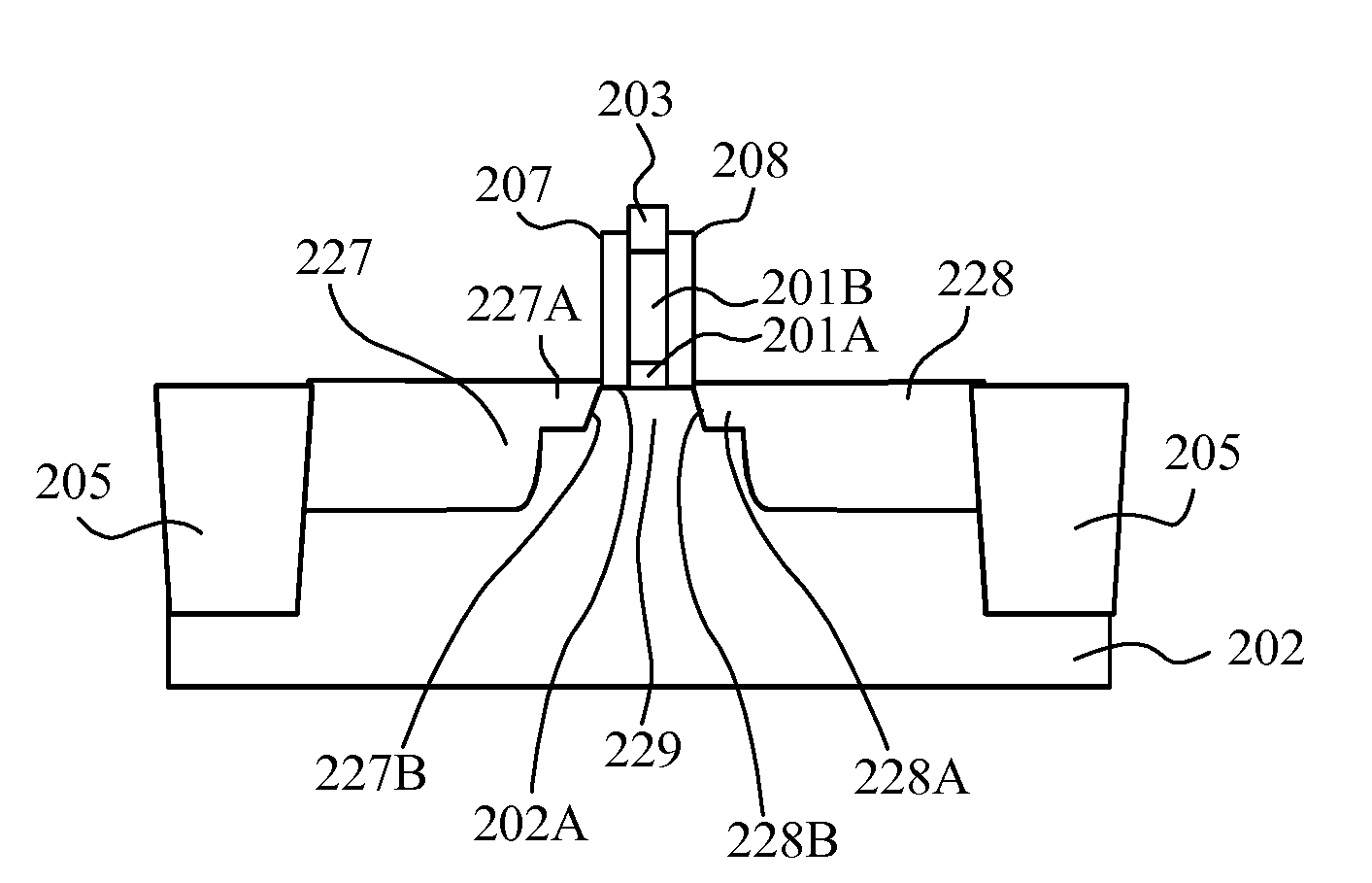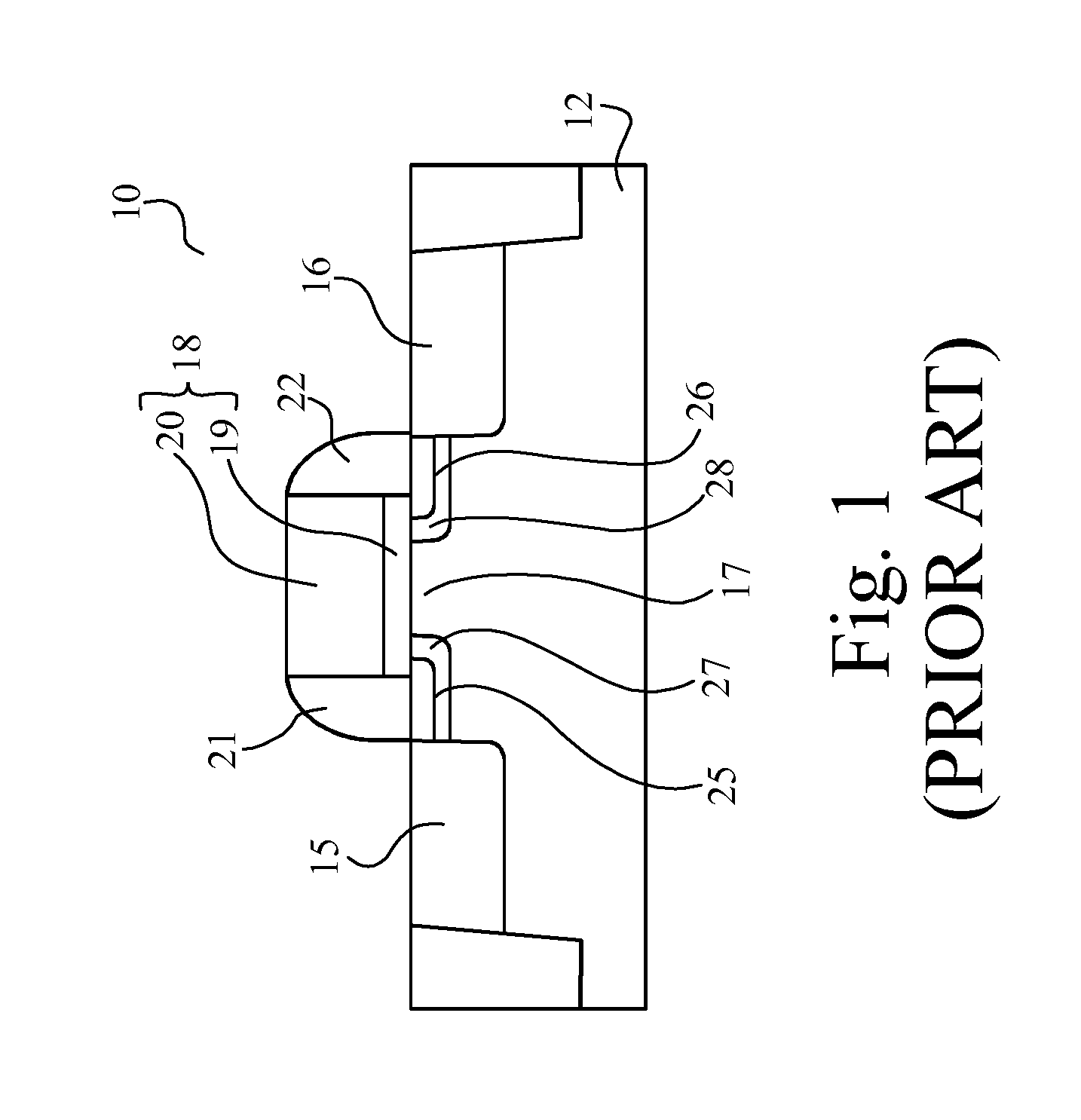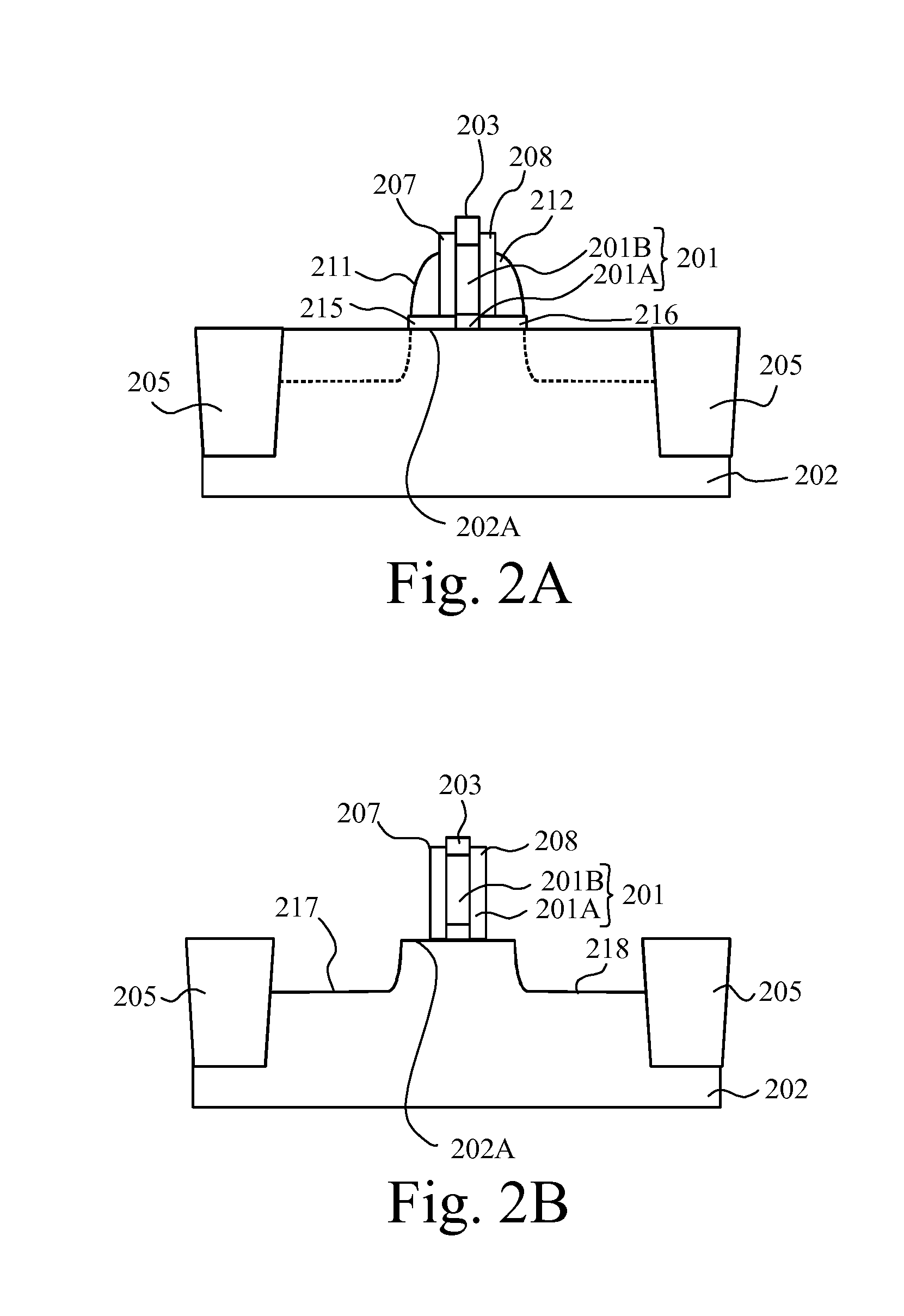Method of fabricating a transistor structure
a transistor and structure technology, applied in the field of semiconductor integrated circuits, can solve the problems of difficult control, difficult to achieve in practice, and breakdown conditions, and achieve the effects of improving short channel behaviour, reducing the strain in the channel, and improving the short channel behaviour
- Summary
- Abstract
- Description
- Claims
- Application Information
AI Technical Summary
Benefits of technology
Problems solved by technology
Method used
Image
Examples
first embodiment
[0046]According to the invention, the disposable oxide spacer elements 215, 216 are consumed during the formation of the first portions of the deep stressor recesses 217, 218. Advantageously, parameters of the fabrication process, such as a thickness of the disposable oxide spacer elements 215, 216, the etching conditions, and other parameters are adjusted such that exposed portions of the disposable oxide spacer elements 215, 216 are entirely consumed at around the same time as formation of the first portions of the stressor recesses 217, 218 is complete. Advantageously, an etch having a low selectivity between the substrate material and the disposable oxide spacer elements 215, 216 is used.
[0047]Reactive ion etching of the source and drain stressor recesses is advantageously performed using a gaseous etchant comprising a mixture of flowing gases. The mixture of flowing gases may comprise: HBr, O2, He, Cl2, SF6, N2 (either individually or in combination) at a flow rate of from abou...
second embodiment
[0081]According to the invention, the disposable oxide spacer elements 315, 316 remain following formation of the first portions of the deep stressor recesses 317, 318. This is achieved by performing a selective reactive ion etching process. The selective reactive ion etching process is directed to etch silicon and not silicon oxide.
[0082]FIG. 3C shows the structure of FIG. 3B following the steps of removing the disposable oxide spacer elements 315, 316. The disposable oxide spacer elements 315, 316 may also be referred to as sacrificial spacer elements 315, 316.
[0083]Advantageously the disposable oxide spacer elements 315, 316 are removed by a process of reactive ion etching. Advantageously, the disposable oxide spacer elements 315, 316 are removed by changing a chemical composition of a gas from a first chemical composition, used in the reactive ion etching process used to form the first portions of the deep stressor recesses 317, 318, to a second chemical composition. Advantageou...
PUM
 Login to View More
Login to View More Abstract
Description
Claims
Application Information
 Login to View More
Login to View More - R&D
- Intellectual Property
- Life Sciences
- Materials
- Tech Scout
- Unparalleled Data Quality
- Higher Quality Content
- 60% Fewer Hallucinations
Browse by: Latest US Patents, China's latest patents, Technical Efficacy Thesaurus, Application Domain, Technology Topic, Popular Technical Reports.
© 2025 PatSnap. All rights reserved.Legal|Privacy policy|Modern Slavery Act Transparency Statement|Sitemap|About US| Contact US: help@patsnap.com



